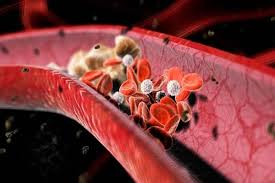Internal structure of nano-sensors (biochemical) in different protein and DNA detection systems of cells (PhD in nano-microelectronics)
Researcher and author: Dr. ( Afshin Rashid)
Structure and structure of chemical biosensors ( cell protein and DNA detection) A type of sensitive circuit architecture that is scalable for larger sensor arrays and allows real-time tracking for clinical diagnosis. They used a sensor 1 in 1.2 cm custom sensor to sensor 300 micrometers, which contains an array of eight and eight sensor rotation valve is used. Each sensor has an area of 90 by 90 microns, which is made in series by combining parallel sets in the form of magnetic nano-sensor strips to be able to adjust the surface of the coating independently of the resistance with the maximum applicable voltage in the range of 0.5. V to prevent breakage of the passive thin layer The sensor uses paramagnetic particles ranging from micro to nanoparticles that were linked to various biomolecules that can detect very specific proteins.
Nanosensors (biochemical) in various protein and DNA detection systems of cells
The detection of proteins using smaller particles, performance measurement magnetosandwich Due to the sensitivity and dynamic enhanced the detection limits due to the large amount of background non-specific, especially for the smallest particles of 125 nm is used, this problem using A more accurate blocking method detects S100ββ, a cellular diagnostic marker in the sensor structure; However, smaller particles may produce a smaller magnetic response due to lower magnetization, leading to an exchange between the non- new size of the magnetic particle for magnetic signal generation and sensing performance.
Conclusion:
Magnetic biochemical nanosensors offer rapid, sensitive, and unprecedented methods for detecting important disease markers. With proper selection of non- New magnetic particles , can be substantial degree of clustering that resulted in non-sensitive magnetic sensor using a strong blocker prevented. In addition, smaller particles increase sensitivity and a wider dynamic range of concentration. However, smaller particles may be less because of the magnetization of the lower magnetic response shows that the exchange between the size of non- New magnetic particles for magnetic signal and measured for performance.
Researcher and author: Dr. ( Afshin Rashid)
PhD in Nano-Microelectronics




